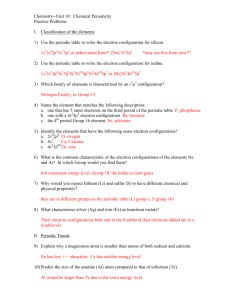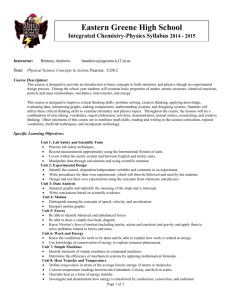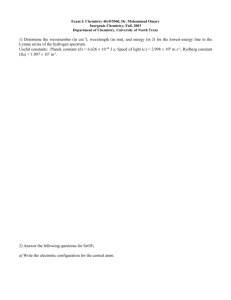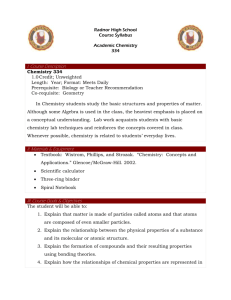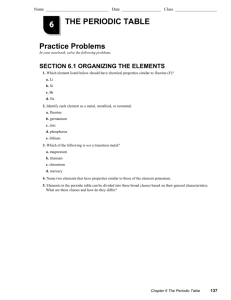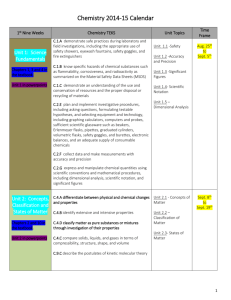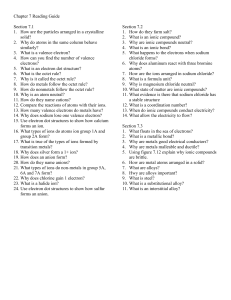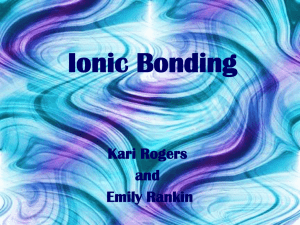+JMJ+ Chemistry Honors Semester Exam Study Guide Fall 2013
advertisement
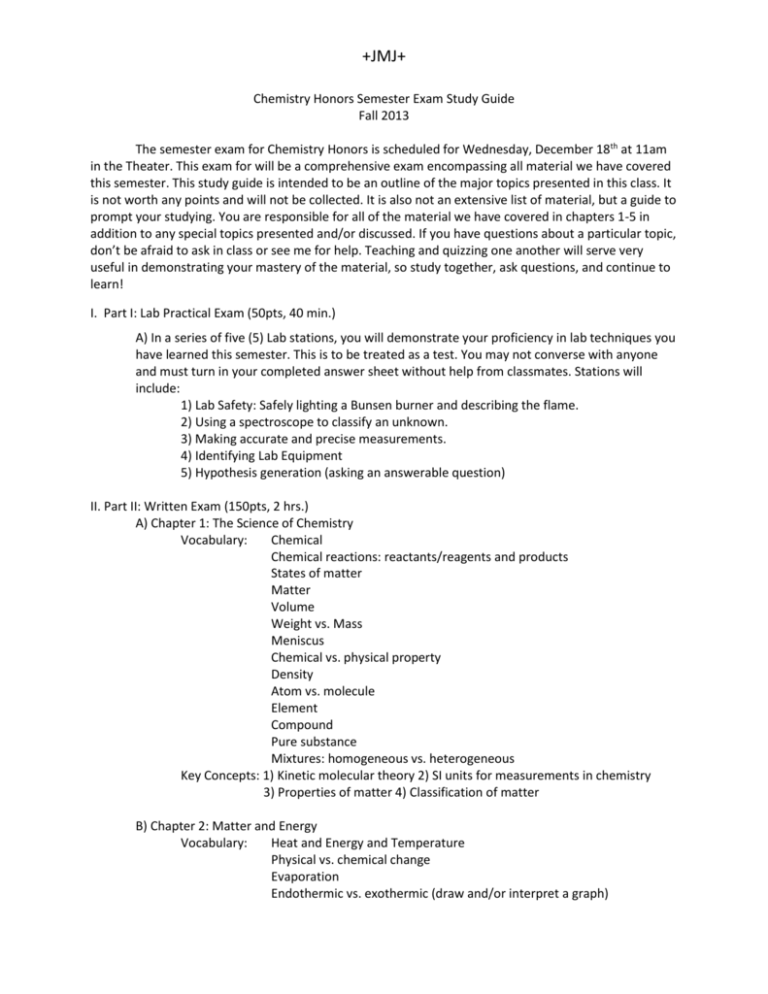
+JMJ+ Chemistry Honors Semester Exam Study Guide Fall 2013 The semester exam for Chemistry Honors is scheduled for Wednesday, December 18th at 11am in the Theater. This exam for will be a comprehensive exam encompassing all material we have covered this semester. This study guide is intended to be an outline of the major topics presented in this class. It is not worth any points and will not be collected. It is also not an extensive list of material, but a guide to prompt your studying. You are responsible for all of the material we have covered in chapters 1-5 in addition to any special topics presented and/or discussed. If you have questions about a particular topic, don’t be afraid to ask in class or see me for help. Teaching and quizzing one another will serve very useful in demonstrating your mastery of the material, so study together, ask questions, and continue to learn! I. Part I: Lab Practical Exam (50pts, 40 min.) A) In a series of five (5) Lab stations, you will demonstrate your proficiency in lab techniques you have learned this semester. This is to be treated as a test. You may not converse with anyone and must turn in your completed answer sheet without help from classmates. Stations will include: 1) Lab Safety: Safely lighting a Bunsen burner and describing the flame. 2) Using a spectroscope to classify an unknown. 3) Making accurate and precise measurements. 4) Identifying Lab Equipment 5) Hypothesis generation (asking an answerable question) II. Part II: Written Exam (150pts, 2 hrs.) A) Chapter 1: The Science of Chemistry Vocabulary: Chemical Chemical reactions: reactants/reagents and products States of matter Matter Volume Weight vs. Mass Meniscus Chemical vs. physical property Density Atom vs. molecule Element Compound Pure substance Mixtures: homogeneous vs. heterogeneous Key Concepts: 1) Kinetic molecular theory 2) SI units for measurements in chemistry 3) Properties of matter 4) Classification of matter B) Chapter 2: Matter and Energy Vocabulary: Heat and Energy and Temperature Physical vs. chemical change Evaporation Endothermic vs. exothermic (draw and/or interpret a graph) +JMJ+ Specific heat (remember the formula? units? meaning?) Heating curve for H2O The Scientific Method Hypothesis Theory vs. law Law of conservation of mass Law of conservation of energy Accuracy vs. precision Significant figures Key concepts: 1) Energy and mass conservation 2) The Scientific Method 3) Making measurements in chemistry 4) distinguishing between chemical and physical changes. C) Chapter 3: Atoms and Moles Vocabulary: Law of definite proportions Law of multiple proportions Electron Nucleus Proton Neutron Atomic number Atomic mass Mass number Molar mass Isotope Orbitals: s, p, d, f and their max. # of eElectromagnetic spectrum: ROYGBIV (Light and e- properties) Ground vs. excited state for ePrincipal quantum number: what does it mean? Pauli exclusion principle Aufbau principle Hund’s rule Mole and Avogadro’s # (based off of which element?) Key concepts: 1) The structure of an atom 2) Formation of an isotope 3) Particles common charges and masses (for p+, e-, and n0) 4) Finding # of n0 5) nuclear symbol notation 6) Determining # of particles in isotopes 7) Principal quantum number: How does it relate to element position on the periodic table? 8) Electron configuarions (all three methods) 9) Dual wave-particle nature of electrons 10) the mole 11) Conversions using amount in moles to grams and/or atoms 12) Ununpentium and creating synthetic elements D) Chapter 4: The Periodic Table Vocabulary: Periodicity and the Periodic law Valence eGroup Period Main group elements: which ones are they? +JMJ+ All group names, for example: alkali metals, halogens, noble gases, etc. Ionization energy Electron shielding Atomic radius Electronegativity Nuclear reactions- nuclear fusion vs. nuclear fission The Big Bang Theory (not the TV show) Key Concepts: 1) Names of the different blocks of the periodic table 2) group properties 3) Forming ions 4) Synthetic elements E) Chapter 5: Ions and Ionic Compounds Vocabulary: Octet rule Ion: cation or anion Salt Crystal lattice Polyatomic ion Key Concepts: 1) Electron configurations change in making an ion, why? TO BE STABLE LIKE THE NOBLE GASES 2) Ion charges and valence electron numbers of the main group elements 3) Metals are weird-can be cations of various charges 4) Properties of ionic compounds 5) Naming ionic compounds 6) Ionic compounds MUST be neutral in charge 7) Proper use of parentheses and subscripts and superscripts for compound formulas and ions, respectively.

